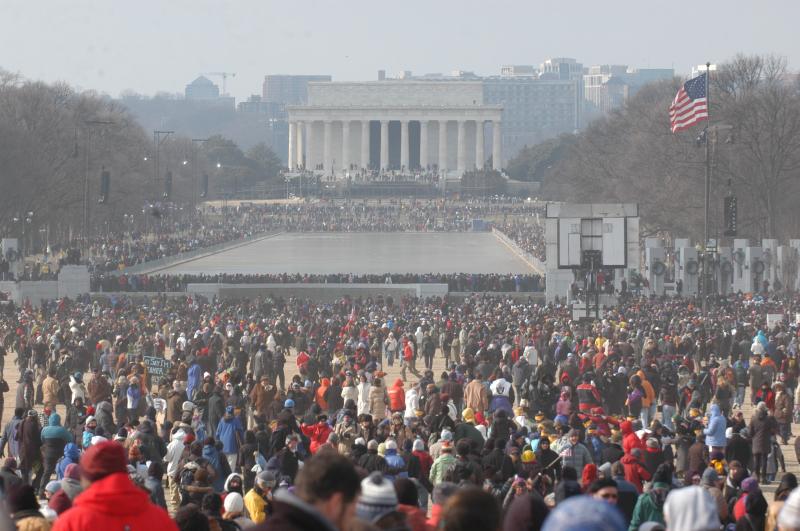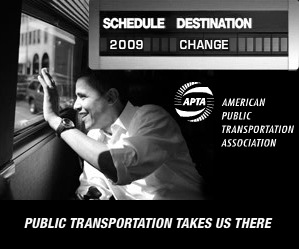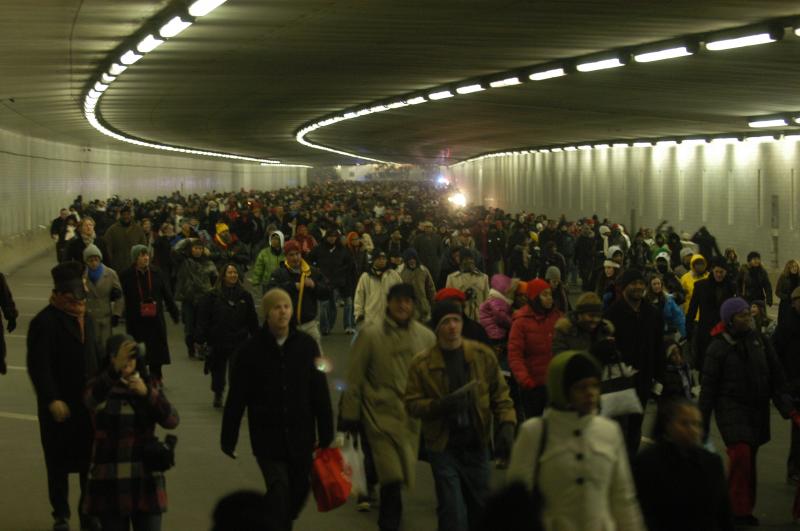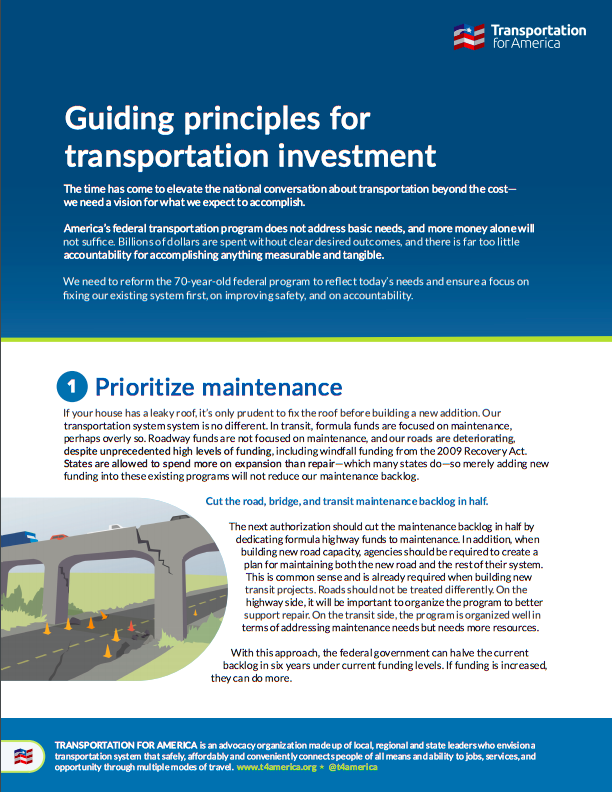The Inauguration: A shining moment for public transportation
 If you were watching television last Tuesday, you saw at least two historic things happen, but there’s a chance that the lesser of them escaped your notice.
If you were watching television last Tuesday, you saw at least two historic things happen, but there’s a chance that the lesser of them escaped your notice.
What you might have missed was the fact that Washington, D.C. also managed to quadruple the number of people who travel into the city on a typical day — from 400,000 to 1.8 million — without breaking out into total chaos. And that number was quadrupled at on the same day that they closed all Potomac River bridges and banned private vehicles from a large area around the Mall and parade route.
The star performer of the day? What the Washington Post‘s Dr. Gridlock calls “the Washington region’s biggest transportation asset: The Metrorail system.”
By many accounts, it was the largest public gathering in city’s history. And for certain, it was the highest rail ridership day that Metro has ever had in its history. It wasn’t even close. The previous record, actually set just the day before at 866,681 trips, was completely obliterated with a total of 1,120,000 riders on Inauguration Day. There were problems with stations getting closed at times due to crowding, and definitely some packed platforms, but on the whole, Metro stood up to numbers far higher than anyone had ever seen before.
 |
| Even President Obama got there on public transportation |
The Post’s Dr. Gridlock wrote a four part post-mortem on “How It Worked,” and his general conclusion? Thousands biked, even more walked, roads and bridges were closed to cars, and embraced the superior carrying capacity of Metro.
Local blog Greater Greater Washington points to last Tuesday’s success as a blueprint for the future of a growing Washington, DC region:
If our region is to grow, we need to help more people reach their jobs. One approach is to add traffic lanes and parking garages at enormous cost, both financial and in lost urban vitality. The other solution is to move people as we did on Tuesday. More people rode the trains. Each vehicle coming into the downtown core carried far more people. Over 2,000 people used WABA’s bike valet. And many more people started their days within walking distance of downtown. Those houseguests raised our population density enormously, enriching our neighborhood businesses besides.
To follow that up, read what Ryan Avent points out about Metro’s ridership these days, especially in light of the city’s population continuing to grow.
And now, of the top 20 ridership days, one was in 2004 (Reagan’s funeral), one in 2007, 16 were last year, and two have already happened this year. And the metropolitan population continues to grow. One might think that WMATA and the District would work to enhance core service, by planning a new core line and by adding streetcar capacity to help with the intracity load.
So what’s the status of expanding and building upon “the region’s greatest transportation asset?” If you’ve seen the transit cuts map, you might already know the answer: Cutting nearly 900 jobs and cutting $73 million in service. That operating assistance sure would have been useful to keeping the economic backbone of the region functioning.
Photos by Steve Davis







No Comments